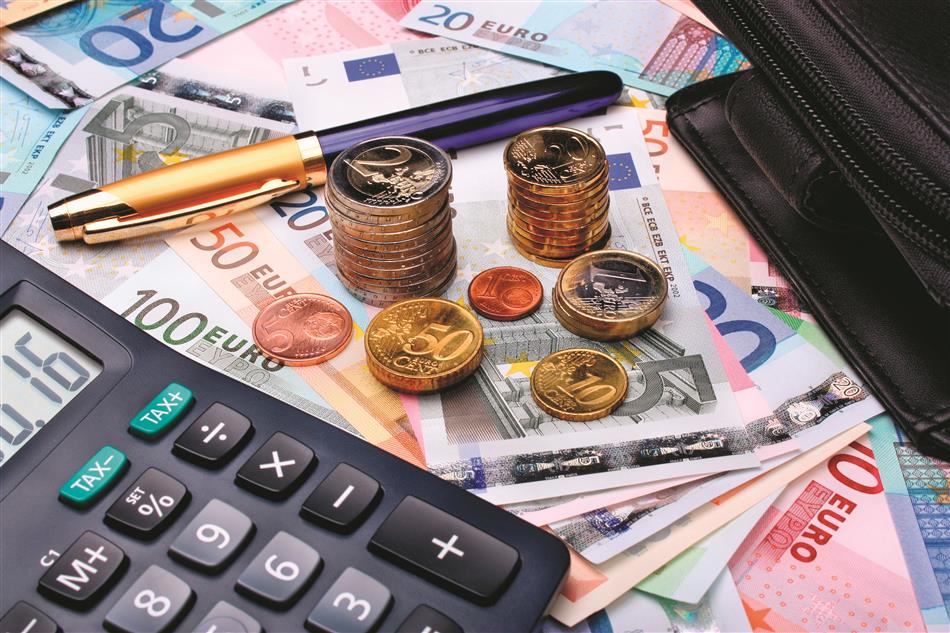Economy
“The script is serious and should be taken seriously”

The latest data from Eurostat is disappointing for Portugal: last year, almost a quarter of self-employed workers in the European Union were at risk of poverty or social exclusion. In Portugal they are third. Only Romania looks worse in the picture. “At the national level, in 2021, Romania, Portugal and Estonia had the highest proportion of self-employed workers at risk of poverty and social exclusion (70.8%, 32.4% and 32.2%),” reported the European Statistical Office , revealing the unreliability of working with green receipts and without a contract in the country. On average across EU countries, the situation has also deteriorated, but not as much. According to published data, compared to 2020 and in the analysis of the categories “unemployed”, “pensioners”, “employed” and “independent workers”, the latter was the only one in which the worsening of the poverty situation was recorded, from 22.6% to 23. 6%. By contrast, self-employment poverty improved in 11 countries, with Ireland and Hungary recording the largest declines between 2020 and 2021 (-3.2 and -3.7 percentage points, respectively).
For Enrique Tomé, an analyst at XTB, the data “reflects the volatile state of the labor market in Portugal,” he says, explaining that for companies “hiring new contract workers is becoming too expensive, especially for SMEs, leading many companies to use green slips as a alternatives.” And he adds: “However, conditions for the worker are not the best, because he is too exposed to the prevailing economic conditions and has less support in the event of dismissal.”
So the analyst heard Sunrise has no doubt: “This scenario is serious and should be taken seriously because if economic conditions worsen, the labor market will naturally suffer and could create a delicate situation.”
To reverse this trend, several things can be done, says Enrique Tome. “We need to create conditions to protect the self-employed, and also support companies so that they feel motivated to hire new contract workers – the alternative could be to reduce the costs that companies have to insure.”
However, it must be taken into account that these Eurostat data refer to 2021. And yet they are not very encouraging, as they already show a deterioration compared to 2020. How will the balance of this year and next? “It is possible that the next few years will certainly be difficult for all economies, given that economic forecasts indicate a possible slowdown in economic activity, which could cause periods of deep recession in the most vulnerable economies, such as Portugal,” the analyst replies. XTB.
Risk? Portugal takes root at the tail of Europe. “This possible scenario further exacerbates the difference between the largest and most fragile economies,” warns Enrique Tome, adding that despite “the European Commission’s initial projections that Portugal would be the eurozone country with the highest growth rate in terms of GDP, the truth is that the country continues to grow at a very modest pace, and the rate of growth has actually slowed down over the past few years.”
Looking at the worst-case scenario, namely a recession, “Portuguese’s economy is likely to be hit hard as economic activity remains far below expectations and the country has very high debt compared to what it produces (GDP) and at this point more the issue of the pandemic has become more acute,” the analyst warns.
When asked about the consequences of these Eurostat data, the specialist has no doubts: “We may again witness periods of greater austerity in the country if a recession scenario is realized in Portugal”, but so far “not everyone is in red flags have been raised, but at the same time, we cannot rule out such a possibility.”
It is true, continues Enrique Tomé, that the Portuguese economy is “mired in debt and inflation remains high, which should affect economic activity and could cause periods of economic downturn (recession)”.
And it’s also important to keep in mind that these figures from the European Statistical Office on poverty are not unexpected news. Eurostat has already warned that the pandemic has lifted Portugal from 13th to 8th place in the list of European countries at increased risk of poverty or social exclusion.
It is clear to the analyst that the country “suffers from a big problem – it does not pay enough attention to the private sector, which creates wealth.” But not only that. “This does not create the necessary conditions for the growth of the private sector and contributes to instability in some sectors, which leads to many highly skilled workers choosing to emigrate.”
On the other hand, he argues, “a high tax burden also discourages investment from many companies and does not contribute to the growth of the business structure at all.” These, in his opinion, are “two factors that have not been given due attention in recent years, but which are necessary for the national economy to start growing at an attractive pace.”
Getting poorer?
According to Eurostat, in absolute terms, there are 2.312 million Portuguese people on the verge of poverty in 2021, an increase of 256,000 compared to 2020. You have to go back to 2017 to find a higher figure. As the eighth poorest country in the EU, Portugal has dropped five places in risk of poverty or social exclusion compared to 2020.
And with rising food and energy prices, the situation tends to worsen. Portugal’s European Anti-Poverty Network (EAPN) recently said that the government’s anti-inflation support measures are “not the ideal answer”, although it is “important” that the executive has “taken over”. “I imagine and feel that this is not a perfect answer. We are a poor country and we need to know how to deal with our limitations,” he said. Lusa President of EAPN Portugal Father Jardim Moreira.

“Internet specialist. Evil entrepreneur. Troublemaker. Analyst. Tv aficionado. Thinker. Passionate explorer. Bacon guru.”
Economy
What factors impact financial markets?

The global financial markets are now hugely complex, with traders and analysts around the world looking closely for signs of movement. What are some of the most important factors to be aware of that impact the financial markets?
Geopolitical events
With news breaking from different countries throughout the day, many different stories could affect the markets on any given day. For instance, economic indicators such as the European Central Bank’s inflation rates and gross domestic product numbers released by each country can determine which direction the markets take. Stocks, currencies and other financial instruments can all vary depending on these areas.
Major events such as war breaking out, natural disasters and elections also have an effect. When we look at the commodities market, climate change is an issue to bear in mind, with unusual weather sometimes causing scarcity or abundance of a certain product.
An interesting aspect of the modern financial world is the way that the different markets are linked. This means that any important event or news story that affects one area could easily affect another, even if the link isn’t obvious at first sight. We can also see how local shocks and events can quickly have an effect at a global level.
The financial crisis of 2008 is a good example, as it started with a serious downturn in the US housing market. Although this appeared to be a localized issue at first, it soon revealed some major issues with the global banking setup that caused problems around the planet affecting millions of people and diverse industries.
Speculation and investment trends
The previous factors all point toward the markets changing, and there’s no shortage of traders around the world waiting to see what happens next and how they can benefit. This means that we need to take into account other issues such as speculation and investment trends in the markets.
Armed with a variety of tools, including candlestick charts, traders try to identify trends such as support and resistance levels. They use the information they glean from the charts to make their moves, which can influence the general market if enough people make the same moves or if the amounts involved are significant.
Once an investment trend begins, it can have a knock-on effect that would have been impossible to predict at the outset. The example of Bitcoin and other cryptocurrencies shows how something that starts small can grow impressively. Cryptocurrencies have now gained enough mainstream appeal to influence and disrupt many industries, from healthcare to gaming and banking.
It’s important to understand how the leaders of a company operate and how they have faced challenges in the past. If we look at banking and the Bank of New York Mellon in particular, we can see that its history can be traced back to 1784, so it has overcome all the major events that have occurred since then. With some of the biggest names in the business world making up its key institutional investors, this is a company that we would expect to react effectively to changing markets.
Regulatory changes and company results
Just about every industry represented in the financial markets has laws and regulations that govern it. This means that the fear of harsher new laws is an almost constant threat. Meanwhile, the hope that beneficial changes to the regulations help businesses prosper is the other side of this matter that investors keep a close eye on.
Let’s not forget the role played by the profit and loss results produced by major companies. It’s clear that these results have an almost immediate effect on their stock prices. However, we should also bear in mind that this effect can reach other areas of the economy. A surprising set of results for a large business can produce shock waves that travel around the market.
What impact do they cause?
From the wide variety of examples that we’ve looked at here, it’s clear that the impact isn’t going to be the same in every case. While one set of circumstances might snowball and cause a huge impact, another might cause a limited impact before the news disappears as other events overtake it.
Having said that, one of the key issues that they cause is a higher degree of market volatility. We can see how this works by looking at an area such as the COVID-19 pandemic in 2020. The markets became a lot more volatile as the different aspects of the pandemic became clear. Streaming companies, healthcare companies and video conferencing technology firms made huge profits, while airlines and hotels were among those to lose out massively.
Working out the overall impact of a particular situation is almost impossible to do now. With so many traders looking over the latest news stories and numbers with advanced tools, the original impact can quickly grow or simply disappear. Therefore, the key for investors is to understand emerging trends and react to them before it’s too late.
These details reveal how complex the global financial market is now. It’s a fascinating world, and with more information at our fingertips than ever before, it’s something that anyone can start to research and understand in their own way.

Proud web evangelist. Travel ninja. Creator. Freelance food nerd. Passionate bacon fanatic.
Economy
Everything has been delivered. 10 Bugatti Centodieci are already in the hands of the owners

OAll Bugatti Centodieci have been delivered, the Molsheim-based brand said on Monday. Cristiano Ronaldo received the number 07 in October this year. and Bugatti has now revealed that the latest unit – #10 – is already in the possession of its owner.
“The Centodieci combines all the values of the Bugatti brand in an extraordinary package: rarity, innovation, heritage, craftsmanship and unrivaled performance. The production batch of 10 units was so in demand by our customers that it was sold before the Centodieci. was even officially presented,” said Christophe Piochon, president of Bugatti.
This latest example is finished in Quartz White with carbon fiber trim on the bottom and matte grilles. The brake calipers are painted in Light Blue Sport, as is the logo on the rear that refers to the EB110, the iconic Bugatti model that inspired this Centodieci. Inside, the predominant color is also blue, as you can see in the images above.
This block is powered by the same block as the other nine instances. The 8.0-liter W16 with four turbines is capable of developing 1600 hp. In terms of performance, this allows the Centodieci to hit 100 km/h in just 2.4 seconds and reach a top speed of 380 km/h.
Recall that each unit costs the owners eight million euros before taxes.
Read also: We already know when the Bugatti Centodieci fell into the hands of Ronaldo.

“Internet specialist. Evil entrepreneur. Troublemaker. Analyst. Tv aficionado. Thinker. Passionate explorer. Bacon guru.”
Economy
The first Dacia hybrid. “The cheapest hybrid family on the market”

BUT Dacia revealed this Monday that the hybrid engine has been available since March on the Jogger, the Romanian brand’s model known to be available with a seven-seat variant.
The Jogger Hybrid 140, Dacia’s first hybrid, will hit dealerships in March, but customers can expect and order it as early as January.
The price has been revealed by Dacia and since it’s only available in the seven-seater SL Extreme, it starts at €28,800. The brand claims it is “the most affordable hybrid family car on the market.”
Available in six existing colors to celebrate the launch of this hybrid, there will be a slate gray version, as you can see in the images above.
Equipped with a 1.6 liter four-cylinder petrol engine with 90 hp, the Jogger is also powered by two electric motors (a 50 hp engine and a high-voltage starter-generator). The total power is 140 horsepower. The electric transmission is automatic, four-speed, connected to an internal combustion engine, and two speeds are connected to an electric motor. This combined technology was possible, according to Dacia, only due to the lack of clutch.
Combined with the energy recovery levels of the 1.2kWh (230V) battery pack and the efficiency of the automatic transmission, regenerative braking delivers all-electric traction on 80% of urban journeys and saves up to 40% of fuel compared to a combustion engine vehicle.
Read also: Dual-fuel Dacia Jogger Eco-G. We tried 5 seater and LPG…

“Internet specialist. Evil entrepreneur. Troublemaker. Analyst. Tv aficionado. Thinker. Passionate explorer. Bacon guru.”
-
World4 years ago
The Gabby Petito case. Brian Landry set up camp with his family after his girlfriend disappeared
-
Top News5 years ago
Tristan Thompson reacts to Khloé Kardashian’s new appearance
-
Economy3 years ago
Everything has been delivered. 10 Bugatti Centodieci are already in the hands of the owners
-
Top News5 years ago
TLC ‘sMothered’ recap: ‘Party curled up,’ boyfriend problem
-
Top News5 years ago
Alex Cooper hosts a solo podcast
-
Top News5 years ago
2021 Ford Bronco price: Here’s how much the 2-door and 4-door cost
-
Tech5 years ago
Fall Guys is supplying out a legendary costume and Kudos as an apology present
-
Top News5 years ago
Chiara de Blasio was ‘very cold’ during the arrest of the protest: witness










